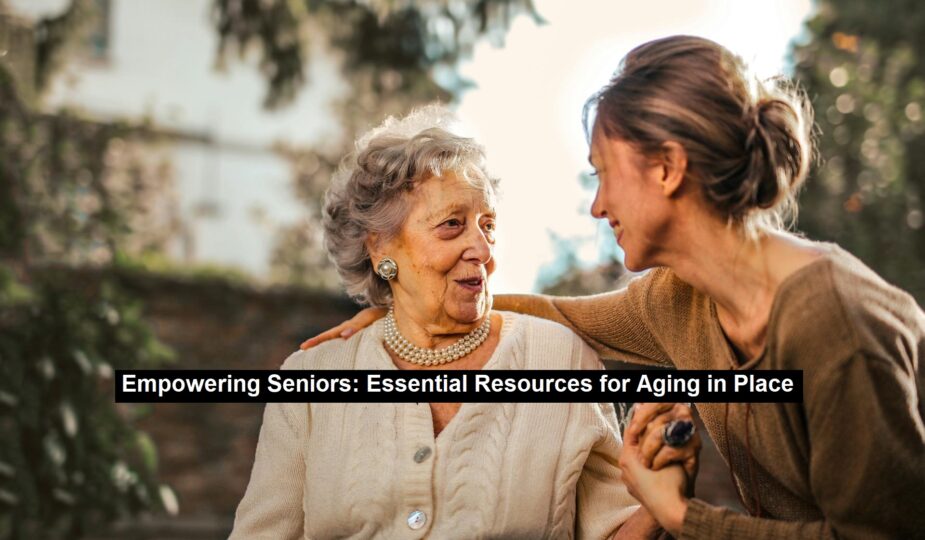The trend of aging in place is gaining recognition as an empowering way for seniors to maintain their independence and comfort. It involves creating a living environment that allows older adults to stay in their own homes safely and with dignity, for as long as possible. By utilizing a blend of supportive services, technology, and home modifications, aging in place becomes a viable option for many. Understand the practical approaches and resources available to make this a reality for yourself or a loved one. Below, we delve into the strategies and tools that can facilitate aging in place effectively.
Understanding Aging in Place: The Basics and Benefits
Aging in place means allowing older adults to remain in their own homes or communities safely and comfortably as they grow older. This approach supports their independence, emotional well-being, and connection to familiar surroundings, often leading to greater happiness and personal freedom compared to moving into care facilities.
To make aging in place possible, seniors can access various services like in-home care and local support programs. Regular visits to a preventive medicine doctor also play a key role in managing health proactively, helping to catch issues early and support a healthier, more independent lifestyle.
Building a Supportive Community Network for Elderly Residents
Having a strong support system is essential for seniors who choose to age in place. By building a network of family, friends, neighbors, and caregiving professionals, seniors can access help when needed, whether it’s for practical tasks or emotional support. Local resources like transportation for appointments and grocery delivery near you can make daily life more manageable and help maintain independence.
Communities can also play a big role through senior-focused programs, volunteer efforts, and intergenerational initiatives. These not only assist with tasks like tech help or errands but also provide companionship to reduce loneliness. Encouraging seniors to stay involved, whether through volunteering or sharing their skills, helps them remain active, connected, and fulfilled.
Home Modification Strategies for Senior Safety and Comfort
Adapting a home to support aging in place involves practical changes that reduce fall risks and improve daily living for older adults. Installing grab bars, enhancing lighting, and using slip-resistant flooring can greatly increase safety. Comfort and accessibility are also key, with updates like lever-style door handles, no-step entries, and adjustable kitchen features helping those with mobility challenges.
Financing assistance and community guidance are often available to support these modifications. Hiring professionals experienced in senior-focused remodeling ensures proper planning and execution. It is important to plan with future needs in mind, making universal design, a concept that promotes accessibility for all, a smart approach to long-term home adjustments.
Read: Turning Hustle Into Habit: How Entering Competitions Became My Morning Routine
Navigating Healthcare at Home: In-Home Support and Telemedicine Options

In-home healthcare services support aging in place by managing chronic conditions and assisting with daily activities like bathing, dressing, and medication management. These services bring skilled nursing and therapy directly to seniors’ homes, promoting comfort and independence. Telemedicine offers a practical solution for routine check-ups, medication changes, and chronic care, especially for seniors in rural areas with limited healthcare access.
Wearable health devices enable real-time monitoring of vital signs, helping providers respond quickly to changes in a senior’s condition. These technologies enhance traditional care, creating a more integrated health management system. Regular communication with healthcare teams and clear usage guidelines are essential for effective in-home care.
Leveraging Technology for Independence: Essential Gadgets and Apps
Technology is transforming how seniors age in place by promoting independence and enhancing safety. Medical alert systems offer quick access to help during emergencies, while smart home devices automate tasks like lighting and door locks to reduce daily challenges. Smartphone apps are emerging to support seniors with medication reminders, cognitive training, and virtual fitness, contributing to both physical and mental well-being.
However, a learning curve often exists, and seniors may need patient support and accessible education to become comfortable with these tools. Local community centers and libraries often provide workshops that teach tech use, helping seniors gain skills while also fostering valuable social connections.
Overall, aging in place offers seniors the chance to live life on their terms while ensuring they have the resources and support to do so safely and with dignity. It requires careful planning, adaptation, and embracing both new technologies and time-honored community networks. Cultivating an environment where aging in place is a celebrated option ensures we value our seniors and recognize the rich contributions they continue to make to our society.










